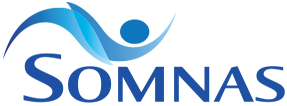[fusion_builder_container hundred_percent=”no” hundred_percent_height=”no” hundred_percent_height_scroll=”no” hundred_percent_height_center_content=”yes” equal_height_columns=”no” menu_anchor=”” hide_on_mobile=”small-visibility,medium-visibility,large-visibility” status=”published” publish_date=”” class=”” id=”” background_color=”” background_image=”” background_position=”center center” background_repeat=”no-repeat” fade=”no” background_parallax=”none” enable_mobile=”no” parallax_speed=”0.3″ video_mp4=”” video_webm=”” video_ogv=”” video_url=”” video_aspect_ratio=”16:9″ video_loop=”yes” video_mute=”yes” video_preview_image=”” border_size=”” border_color=”” border_style=”solid” margin_top=”” margin_bottom=”” padding_top=”” padding_right=”” padding_bottom=”” padding_left=””][fusion_builder_row][fusion_builder_column type=”1_1″ layout=”1_1″ spacing=”” center_content=”no” link=”” target=”_self” min_height=”” hide_on_mobile=”small-visibility,medium-visibility,large-visibility” class=”” id=”” background_color=”” background_image=”” background_position=”left top” background_repeat=”no-repeat” hover_type=”none” border_size=”0″ border_color=”” border_style=”solid” border_position=”all” padding_top=”” padding_right=”” padding_bottom=”” padding_left=”” margin_top=”” margin_bottom=”” animation_type=”” animation_direction=”left” animation_speed=”0.3″ animation_offset=”” last=”no”][fusion_text columns=”” column_min_width=”” column_spacing=”” rule_style=”default” rule_size=”” rule_color=”” hide_on_mobile=”small-visibility,medium-visibility,large-visibility” class=”” id=””]Consumer sleep technologies (CSTs) such as fitness trackers and smartphone apps have become increasingly popular. Most of these devices appear to utilize data generated from in-built accelerometers to determine sleep parameters but the exact mechanisms and algorithms are proprietary. These devices claim to measure the sleep duration of their users and in some cases purport to measure sleep quality, sleep stages including REM sleep. The growing literature comparing these devices against polysomnography/actigraphy shows that they tend to underestimate sleep disruptions and overestimate total sleep times and sleep efficiency in normal subjects. This American Academy of Sleep Medicine position statement details the advantages and disadvantages of CSTs and provides guidance when approaching patient-generated health data from CSTs in a clinical setting.[/fusion_text][fusion_text columns=”” column_min_width=”” column_spacing=”” rule_style=”default” rule_size=”” rule_color=”” hide_on_mobile=”small-visibility,medium-visibility,large-visibility” class=”” id=””]Consumer Sleep Technology: An American Academy of Sleep Medicine Position Statement
J Clin Sleep Med. 2018 May 15; 14(5): 877–880
https://www.ncbi.nlm.nih.gov/pmc/articles/PMC6095823/pdf/nihms-1500634.pdf[/fusion_text][/fusion_builder_column][/fusion_builder_row][/fusion_builder_container]

